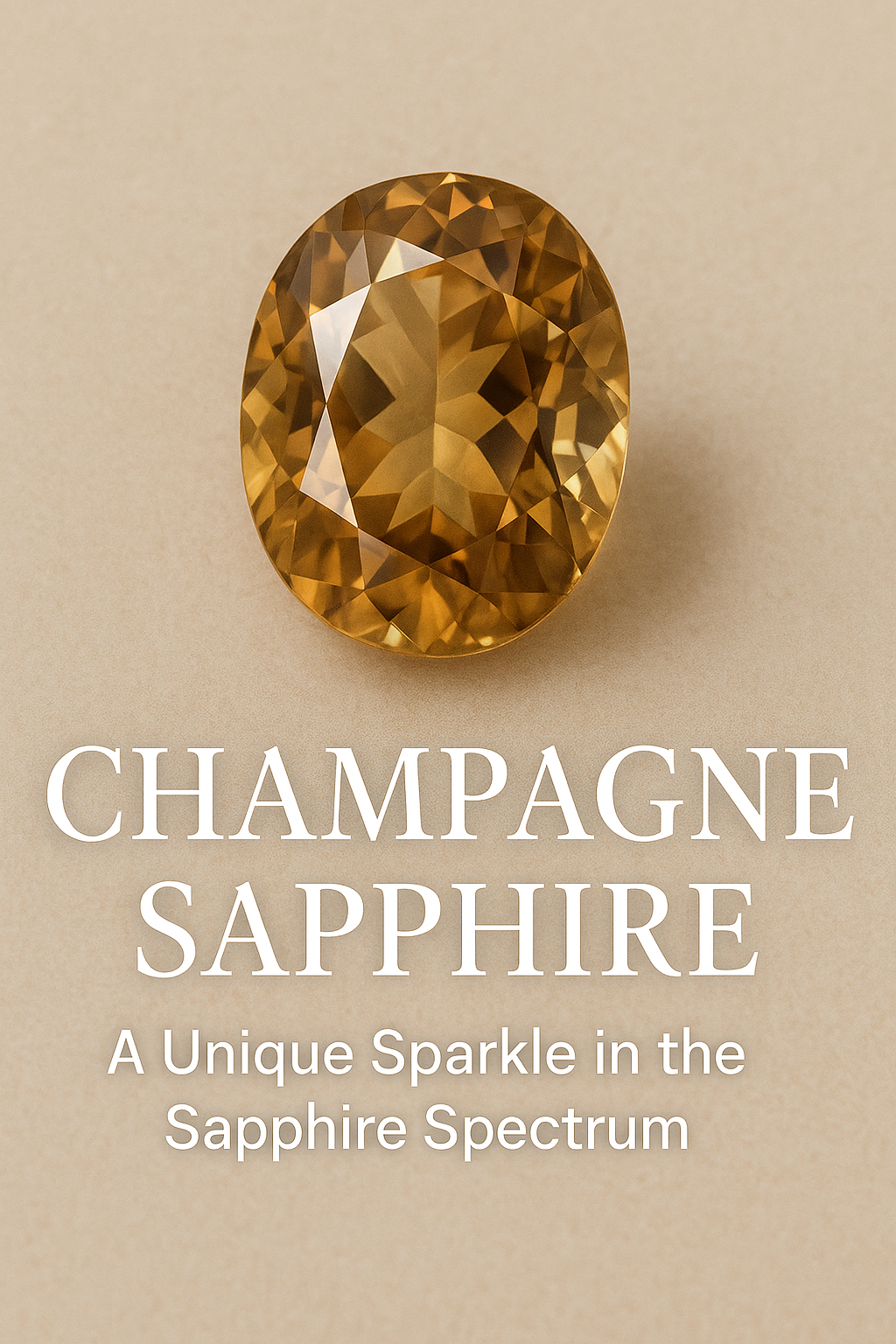Champagne Sapphire: A Unique Sparkle in the Sapphire Spectrum

Champagne Sapphire: A Unique Sparkle in the Sapphire Spectrum
Champagne sapphire is an elegant and understated gemstone that stands out for its warm, earthy tones ranging from light gold to soft cognac. Unlike traditional blue sapphires, champagne sapphires offer a refined alternative for those seeking something distinctive, natural, and timeless. Whether used in fine jewelry or added to a gemstone collection, this sapphire variety is gaining popularity for its subtle beauty and natural appeal.
What is Champagne Sapphire?
Champagne sapphire is a natural corundum—just like all sapphires—with a unique color caused by trace elements of iron. The iron content produces soft golden to brownish hues, reminiscent of sparkling champagne. These stones are often found in Sri Lanka (Ceylon), Madagascar, and Australia, and they are prized for their durability (Mohs hardness of 9) and brilliance.
Unlike heavily saturated colored gems, champagne sapphires offer a more muted, versatile tone that pairs effortlessly with both gold and silver settings. Their neutral color also makes them a preferred choice for alternative engagement rings and everyday jewelry.
Champagne vs. Green Sapphire: What’s the Difference?
Although both champagne and green sapphires belong to the corundum family, their color differences come from distinct trace elements.
-
Champagne sapphire gets its color from iron. Its hues range from pale yellow to golden-brown, often with a sparkling clarity.
-
Green sapphire, on the other hand, typically owes its color to a combination of iron and titanium, or occasionally chromium, which gives it shades ranging from mint to forest green.
Another key distinction lies in appearance:
-
Champagne sapphires usually display a more even tone, while green sapphires can sometimes appear color-zoned or show bluish undertones.
-
In terms of symbolism, champagne sapphires are associated with warmth, calmness, and balance, whereas green sapphires are often linked to growth, renewal, and emotional clarity.
From a pricing perspective, both stones are generally more affordable than blue sapphires or padparadscha sapphires, but their value depends on clarity, cut, size, and color intensity.
Scientific Insights
Sapphires are made of aluminum oxide (Al₂O₃) and belong to the trigonal crystal system. Their color variations result from trace elements that replace aluminum atoms in the crystal lattice.
-
For champagne sapphires, Fe²⁺ and Fe³⁺ ions are primarily responsible for their golden to brownish hues.
-
The refractive index of sapphire is about 1.76–1.77, contributing to its exceptional brilliance.
-
With a specific gravity of 3.95–4.03, champagne sapphire is dense and feels heavier than many similarly sized gemstones.
Sapphires are often untreated, but some champagne sapphires may undergo heat treatment to improve clarity and stabilize color. Always check with a trusted gem dealer or certification lab for full disclosure.
Final Thoughts
Champagne sapphire is a sophisticated and natural choice for those seeking something beyond the classic blue. With its soft glow, scientific resilience, and accessible price, it offers a beautiful blend of elegance and practicality. Whether you're a gem enthusiast or shopping for a meaningful gift, champagne sapphire is a gem worth toasting to.
Recent Posts
-
Understanding Specific Gravity (SG) in Gemstones
When it comes to identifying gemstones, beauty alone isn’t enough. Gemologists rely on physical p …18th Sep 2025 -
Discover the Magic of Madagascar Blue-Green Sapphire
Discover the Magic of Madagascar Blue-Green Sapphire If you’re a gemstone lover, you’ve surely heard …11th Jul 2025 -
Champagne Sapphire: A Unique Sparkle in the Sapphire Spectrum
Champagne Sapphire: A Unique Sparkle in the Sapphire Spectrum Champagne sapphire is an elegant and u …26th May 2025